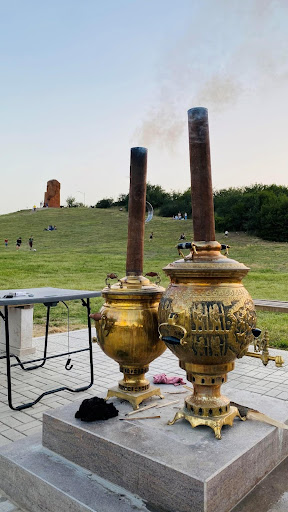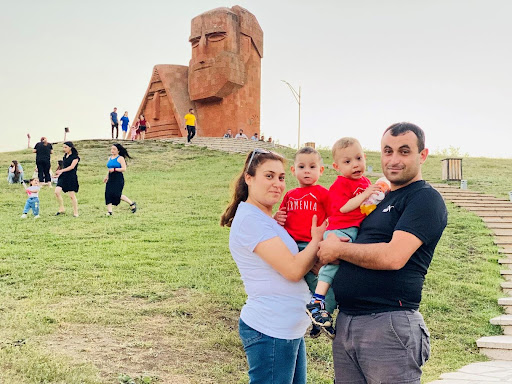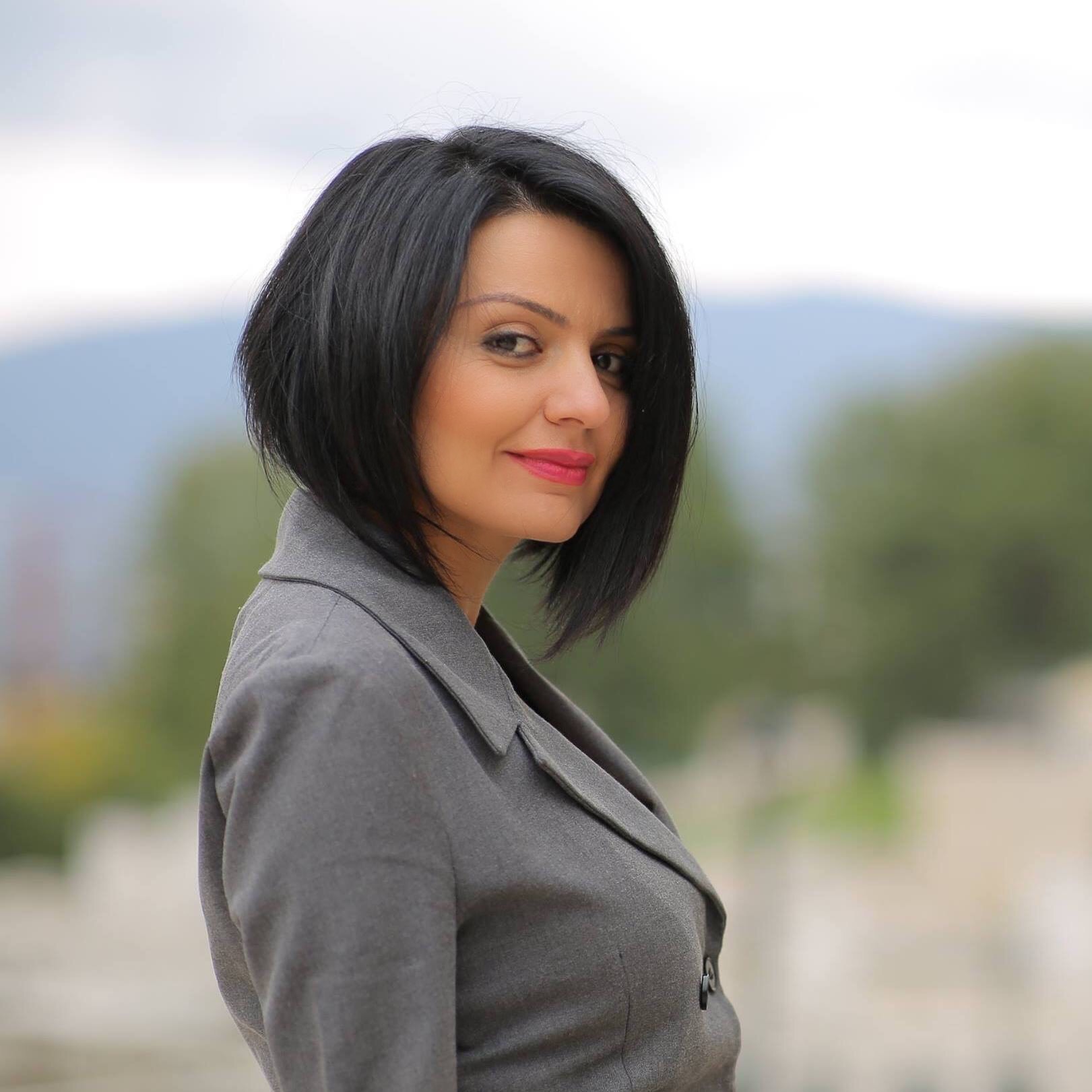
Towering high above Artsakh’s capital of Stepanakert stands an iconic monument that symbolizes the intrinsic connection between Artsakh and her resilient people. “We are Our Mountains,” also known in Artsakh as “Tatik Papik,” is made of volcanic tufa. The structure represents the elders of Artsakh in traditional garments, proudly standing shoulder to shoulder. It does not rest on a pedestal; it’s as if the hill was cracked, and the grandmother and grandfather climbed up to stand with their feet firmly planted in their native land.
The symbolic nature of the statue is also expressed in the architectural design by sculptor Sargis Baghdasaryan and architect Yuri Hakobyan. The monument resembles the combination of Sis and Masis peaks of Mount Ararat, once again indicating the idea of Armenian pride. This was the first monument dedicated to longevity for which Artsakh is known.
Others have put forth the idea that if the roof-shaped grandmother is placed on top of the grandfather, the structure would resemble a house. Perhaps this is why young couples, like Gevorg and Zarine, who get married in Stepanakert and neighboring villages receive their first “blessing” from “Tatik Papik.”

Before the 2020 Artsakh War, tourists would flock to this site. These days, the people of Artsakh, who lost Shushi’s Katarot, are now holding “Tatik Papik” close to their hearts, spending their summer days and nights in its shadow.
Little Marine, who just turned 10 months old, is seen celebrating with her proud parents, who got married immediately after the end of the war. They didn’t have a wedding; they said they couldn’t imagine such a celebration after the incurred losses. They just wanted to start building a family and revive Artsakh again. Their feelings of love and loss are intermixed. They can’t imagine living anywhere else but Artsakh. They want to believe that their daughter and future children will live in peace on their rightful land.

Milena is a guitarist who plays and sings in the band “Artsakhiks.” She often visits “Tatik Papik” with her sister Lina and her friends Yana and Lilit. The day before war broke out, they enjoyed a picnic at the monument. They never thought that the following day their world would no longer be the same. That is why they often visit “Tatik Papik.” The young women are studying in Yerevan, and they are looking forward to returning and applying what they have learned to form a band in Artsakh and develop Armenian culture in Artsakh. Lina, a director, produced a film about her grandfather and Artsakh. The young women do not believe in peace, but they do rely on its fragility.

Twins Aren and Arman were born during the war. Their parents were forcibly displaced from the village of Shekher in the region of Martuni. Their father works for The HALO Trust demining company, and their mother proudly states that her work is more important—raising two sons. The most difficult issue facing this young family is housing; they are uncertain about their future.

Anush Yengibaryan is an artist who works in Stepanakert children’s creative center, helping hundreds of children develop their artistic abilities. Anush often takes her students to draw outdoors for greater inspiration. Students said that, by painting here, they get more inspiration from their homeland and the paintings turn out more natural.

A group of children gather to play soccer. They say they dream of being a great soccer player, doctor and soldier. One child says he would like to open up the first tattoo parlor in Artsakh. They love “Tatik Papik” because it belongs to them. This is where their homeland begins.

Tensions remain high in the region following this week’s deadly attacks, as villagers in Aghavno face eviction. But just as the roots of “Tatik Papik” remain deeply buried in the soil, so are the roots of the people of Artsakh.



Be the first to comment